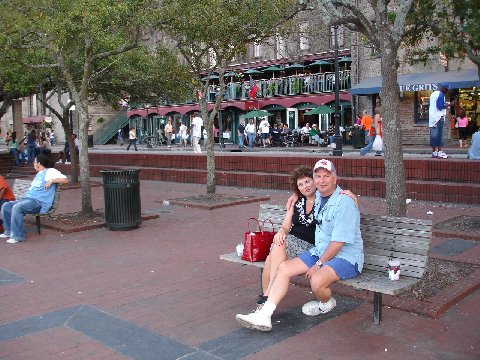 KATHY'S BROOM
KATHY'S BROOM GAYLE'S BROOM
GAYLE'S BROOM LINDA'S BROOM
LINDA'S BROOMVERNAL EQUINOX-BROOM STANDING
Every year my friend Gayle calls and announces the Equinox and its time to stand up our brooms. Its a fun tradition and we all like to post our broom standing pictures.
The story goes that during the summer and fall equinox the planets are aligned and makes this possible.
Ofcourse there are the scientific naysayers that claim there is no scientific basis linking the two. That a broom can stand up at any time of the year. To that I say go stuff your hat.
Rather I believe it or not, its fun, especially sharing it with friends and children . Life is much brighter when you can still have mystery and whimsy in it.
As noted in the following article on Wiki. The Equinox effects satellites. There for to dismiss a standing broom or having more nutcases out than usual during the equinox could have a basis. After all aren't these scientists the same ones that try to convince us there are black holes in the universe and spend billions on research for somehing they say can't be seen. Well I can see my broom standing, so bite me, Mr. Scientist go tell some young child there isnt a Santa Claus or something.
*****Wikipedia
An equinox occurs twice a year, when the tilt of the Earth's axis is inclined neither away from nor towards the Sun, the center of the Sun being in the same plane as the Earth's equator. The term equinox can also be used in a broader sense, meaning the date when such a passage happens. The name "equinox" is derived from the Latin aequus (equal) and nox (night), because around the equinox, the night and day have approximately equal length.
At an equinox, the Sun is at one of two opposite points on the celestial sphere where the celestial equator (i.e. declination 0) and ecliptic intersect. These points of intersection are called equinoctial points: classically, the vernal point and the autumnal point. By extension, the term equinox may denote an equinoctial point.
An equinox happens each year at two specific moments in time (rather than two whole days), when there is a location (the subsolar point) on the Earth's equator, where the center of the Sun can be observed to be vertically overhead, occurring around March 20/21 and September 22/23 each year.
Although the word equinox is often understood to mean "equal [day and] night," this is not strictly true. For most locations on earth, there are two distinct identifiable days per year when the length of day and night are closest to being equal; those days are referred to as the "equiluxes" to distinguish them from the equinoxes. Equinoxes are points in time, but equiluxes are days. By convention, equiluxes are the days where sunrise and sunset are closest to being exactly 12 hours apart.
Effect on communication satellites
One effect of equinoctial periods is the temporary disruption of communications satellites. For all geostationary satellites, there are a few days around the equinox when the sun goes directly behind the satellite relative to Earth (i.e. within the beam-width of the groundstation antenna) for a short period each day. The Sun's immense power and broad radiation spectrum overload the Earth station's reception circuits with noise and, depending on antenna size and other factors, temporarily disrupt or degrade the circuit. The duration of those effects varies but can range from a few minutes to an hour. (For a given frequency band, a larger antenna has a narrower beamwidth & hence experiences shorter duration "Sun outage" windows.)
An equinox occurs twice a year, when the tilt of the Earth's axis is inclined neither away from nor towards the Sun, the center of the Sun being in the same plane as the Earth's equator. The term equinox can also be used in a broader sense, meaning the date when such a passage happens. The name "equinox" is derived from the Latin aequus (equal) and nox (night), because around the equinox, the night and day have approximately equal length.
At an equinox, the Sun is at one of two opposite points on the celestial sphere where the celestial equator (i.e. declination 0) and ecliptic intersect. These points of intersection are called equinoctial points: classically, the vernal point and the autumnal point. By extension, the term equinox may denote an equinoctial point.
An equinox happens each year at two specific moments in time (rather than two whole days), when there is a location (the subsolar point) on the Earth's equator, where the center of the Sun can be observed to be vertically overhead, occurring around March 20/21 and September 22/23 each year.
Although the word equinox is often understood to mean "equal [day and] night," this is not strictly true. For most locations on earth, there are two distinct identifiable days per year when the length of day and night are closest to being equal; those days are referred to as the "equiluxes" to distinguish them from the equinoxes. Equinoxes are points in time, but equiluxes are days. By convention, equiluxes are the days where sunrise and sunset are closest to being exactly 12 hours apart.
Effect on communication satellites
One effect of equinoctial periods is the temporary disruption of communications satellites. For all geostationary satellites, there are a few days around the equinox when the sun goes directly behind the satellite relative to Earth (i.e. within the beam-width of the groundstation antenna) for a short period each day. The Sun's immense power and broad radiation spectrum overload the Earth station's reception circuits with noise and, depending on antenna size and other factors, temporarily disrupt or degrade the circuit. The duration of those effects varies but can range from a few minutes to an hour. (For a given frequency band, a larger antenna has a narrower beamwidth & hence experiences shorter duration "Sun outage" windows.)









No comments:
Post a Comment